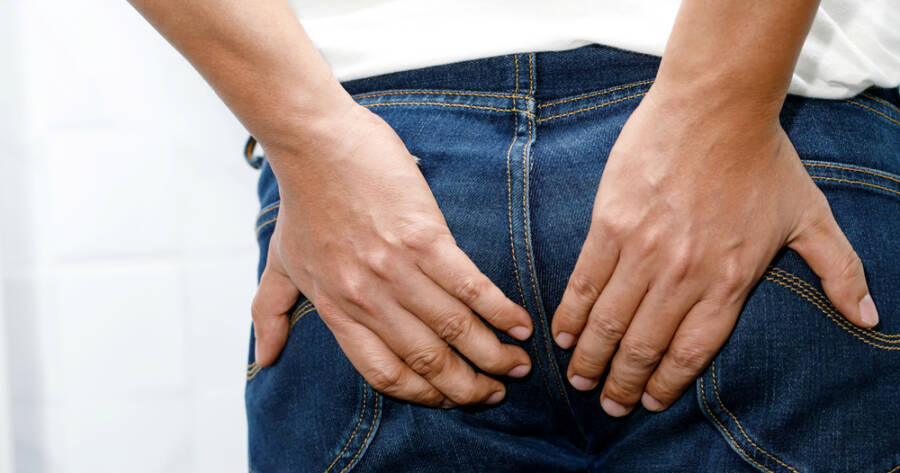Detecting pilonidal cyst symptoms early can spare you unnecessary discomfort and expense. Knowledge is power, so take control of your health.
Early intervention is crucial for a swift and effective response to pilonidal cysts. Educating yourself about the symptoms and treatment options can lead to a quicker recovery and less medical intervention.
What Are Pilonidal Cysts?
Pilonidal cysts are skin infections occurring near the tailbone, often containing hair and skin debris.1 They typically arise due to hair penetration and skin irritation in the buttocks crease, exacerbated by prolonged sitting and pressure. Common in young adults, especially men, these cysts can vary in severity, sometimes leading to painful abscesses requiring surgical intervention. Prompt medical attention is crucial for proper diagnosis and treatment, especially when infection signs like pain, swelling, and pus discharge are present.
Early Detection: Your Key to Quicker Relief
Pilonidal cysts can cause significant discomfort if left untreated. Early detection is crucial in managing this condition effectively. Recognizing the signs — such as pain, redness, and swelling in the tailbone area, or even fever in more severe cases — can save both time and money. By identifying these symptoms promptly, you can seek medical attention before the condition worsens, thereby avoiding costly treatments and prolonged discomfort.
Understanding Symptoms: Empower Your Health Journey
Understanding the symptoms of a pilonidal cyst is the first step towards quicker relief. This knowledge empowers you to take control of your health journey. Symptoms can vary from person to person, but common signs include a painful lump near the tailbone, pus or blood draining from the lump, and discomfort when sitting or standing.2 By familiarizing yourself with these symptoms, you can identify a potential pilonidal cyst early and seek appropriate medical attention. This proactive approach can lead to quicker relief and a smoother recovery.
Role of Professional Medical Evaluation
It’s imperative to seek a professional medical evaluation when pilonidal cyst symptoms are suspected. A healthcare provider can accurately diagnose the condition, distinguishing it from other similar issues like abscesses or skin infections. They use physical examinations and, if necessary, imaging tests to assess the severity and decide the best course of treatment. This professional assessment is vital to avoid self-diagnosis errors and ensure effective and appropriate treatment, reducing the risk of complications and recurrence.
Treatment Options for Pilonidal Cysts
Treatment for pilonidal cysts ranges from conservative methods, like warm compresses and antibiotics, to surgical options.3 The treatment choice depends on the cyst’s severity, with a focus on infection control and symptom relief. Surgical procedures may involve draining the cyst or removing it entirely. Consulting with a healthcare professional is essential to determine the most appropriate treatment plan.
Lifestyle Adjustments To Manage and Prevent Pilonidal Cysts
Preventing pilonidal cysts involves lifestyle changes that reduce risk factors. Maintaining good hygiene, avoiding prolonged periods of sitting, and considering hair removal methods in the tailbone area can be effective. Additionally, weight management and using cushioning when sitting for extended periods can help minimize the recurrence of these cysts.
Long-Term Management and Follow-Up
Long-term management of pilonidal cysts is key to preventing recurrence and maintaining overall health. After initial treatment, regular follow-up with a healthcare provider is recommended to monitor for signs of recurrence. Patients may also receive guidance on lifestyle modifications and hygiene practices tailored to their specific situation. Adhering to these recommendations and staying vigilant for symptoms can significantly reduce the chances of future issues, ensuring long-term comfort and health.
Understanding the Risk Factors
Risk factors for pilonidal cysts include a sedentary lifestyle, obesity, excessive body hair, and a family history of the condition. Young adults, particularly males, are at a higher risk. Being aware of these factors can help individuals take preventative measures and stay vigilant for early signs of the condition.
Myths and Misconceptions about Pilonidal Cysts
There are several myths surrounding pilonidal cysts, such as the belief that they are always caused by poor hygiene or are completely preventable. In reality, these cysts result from a combination of factors, and while hygiene and lifestyle adjustments can reduce risk, they are not foolproof prevention methods. Understanding the facts about pilonidal cysts is important for proper treatment and management.
Prevent Complications: Recognize Symptoms Timely
Timely recognition of pilonidal cyst symptoms can prevent complications. If left untreated, a pilonidal cyst can lead to serious complications such as abscess formation and cellulitis, a skin infection that can spread to other parts of the body.
Recognizing symptoms early allows for prompt treatment, reducing the risk of these complications. It’s important to remember that while a pilonidal cyst can be uncomfortable, it’s treatable, especially when caught early. So, don’t wait until it’s too late. Start your search online today to learn more about pilonidal cyst symptoms and take control of your health.
